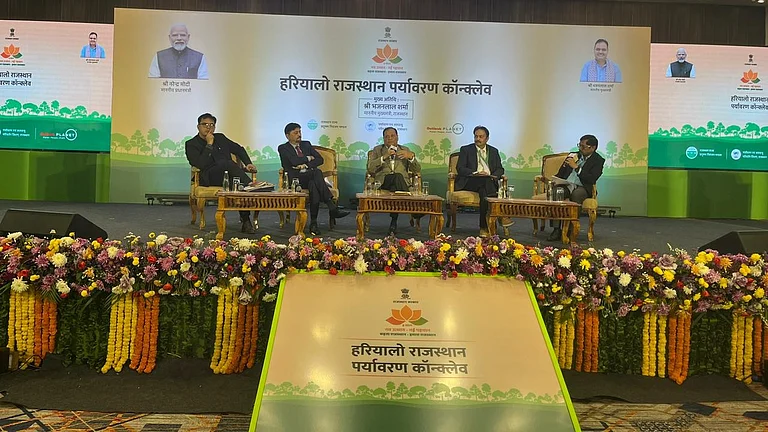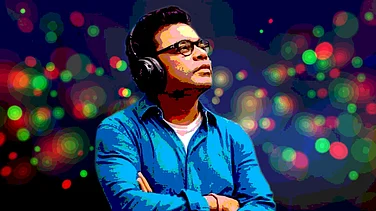With the super success of a few South Indian films throughout the Hindi-speaking areas, the South is extending its reach and trying to involve the media from the North, which limited its scope to covering only Hindi films.
They want to keep the people of Hindi-speaking regions aware of South Indian films all the way while a film is in production and not later when it is a hit in the South and plans are afoot to dub it and take it to the audience in the rest of the country.
Hindi filmmakers who depend heavily on the South for content, buying the Hindi remake rights of many South hits, have not always been welcoming of the South-dubbed films, breaking records in the Hindi market.
Hindi filmmakers and stars did not take kindly to the fact that South Indian films had invaded the Hindi market and were also creating records at the box office. Some even had Twitter spats with their southern counterparts. It was more upsetting for Hindi filmmakers because, while the South films were excelling at the box office, Hindi films of even top stars were failing on a regular basis.
The Hindi side did not have much ground to stand on because almost all makers were remaking South Indian films! It is also a fact that Hindi films alone can't feed the cinemas for all 52 weeks of the year.
Multiplexes with five or more screens have multiple shows each day that need more supply. Regional films, be it Bhojpuri, Gujarati, Punjabi or Marathi, are not doing all that well,either! All they have is Hindi and the Hollywood films and, if the South films were an added alternative, so much the better.
So, to keep the audience informed about their films, the filmmakers in the South have taken to inviting the media from Mumbai, Delhi, and other North Indian centres to cover their events.
South Indian filmmakers inviting the media from the North used to be a routine practice when they made Hindi films. Now, it happens even for an event of a South Indian film because, at the back of their mind, the makers are envisioning the Hindi belt business.
However, just when the respective industries were coming to terms that what mattered was the Indian film industry, the North South divide was refreshed by the media in Bengaluru.
It was an event where the media from the North was invited to cover a promo launch of the Kannada film, 'Martin', starring Dhruv Sarja, in Bengaluru last week. The local media was reluctant to share their events with their counterparts from the North. In a surprising move, the local media blocked the media from the North from entering the event!
They probably don't believe in the philosophy of Atithi Devo Bhava (Guest is God), which is ingrained in our culture. When, finally, the organisers convinced the local media to let the event proceed, they grudgingly allowed the guest media to be accommodated in the front seats of the hall where the promo was to be screened!
What the Bengaluru media did to their brethren from the North was the result of the North-South divide set off by the then Kannada superstar, Dr Rajkumar. Kannada was not much of a film industry. There were no remakes in Hindi. The circuit, known as the Mysore circuit, was not worth more than Rs 50,000 to 60,000 for the rights of a Hindi film, which did business only in Bengaluru.
Dr Rajkumar was a demigod and, during what was termed as the Gokak Movement, he ordained that Hindi films should not be released in Karnataka! This was not all.
Dr Rajkumar went ahead and enforced a ban on the use of any languages except Kannada in the state! Cabbies and shopkeepers refused to converse in any language other than Kannada. The trade magazine I worked for at that time reported and criticised what Dr Rajkumar was up to and, as a result, the magazine was also banned in Karnataka!
That was around the early 1980s and I visited Bengaluru to promote an event. I made a call to the offices of 'The Indian Express'. Guess what? The telephone operator would respond only in Kannada to whatever I asked. I was left with no option but to ask, 'Why the heck do you publish an English daily if you don't answer a caller in English?' Thankfully, my hotel staff was not following the diktat.
Sad, but Dr Rajkumar legacy still prevails. Don't they understand that it was one of their Kannada-language film producers who needed the North media and not the other way round?
Petty, isn't it?
A Tax Free Film? Pay More!
Now, there is an excellent query raised by the Telangana High Court.
The entertainment tax (ET) levied on cinema tickets was a state subject before the GST regime was introduced and, because these tax slabs were very high, filmmakers sought tax exemption from various states. The idea was to make admission rates cheaper, more affordable to help draw more footfalls.
The idea behind exempting films from ET was to encourage good cinema.
This noble idea soon turned into a quid pro quo between filmmakers and politicians. The merit of a film was no more the criteria, greasing palms became the norm. The politicians loved to have film stars grace their events and birthdays.
The ex-UP Chief Minister Akhilesh Yadav, for instance, was on an exemption spree and exempted films on a regular basis. To a great extent, this practice was at work in various states.
As a rule, the benefits of the tax rebate were passed on to the viewers. But no more. The new age management grads came up with a new ecosystem: gobble up that exemption. Without breaking the law, the cinemas increased the admission rates to an extent that would offset the exemption amount! Ek haath se de, ek haath se wapas le!
Take for example the film 'Mary Kom'. A friend went to watch it in an early show when the admission rate was Rs 120. The film was exempted from ET, so he expected the ticket to cost him Rs 90. But he ended up paying Rs 140 instead! What was the explanation? The cinema in question had changed the Rs 120 slot to Rs 140! Claimed they were legally allowed to do that.
The common people either don't know about the film's exemption status or do not care. But, in 2017, a cinema viewers' group, Cine Prekshakula Viniyoga Darula Sangham, filed a PIL in the Telangana High Court stating that the benefit of the films exempted from entertainment tax were never passed on to the viewers by the cinemas.
The HC in 2019 held that the government order had become pointless with the passage of time!
The matter went to the Supreme Court, which held the Telangana HC order was incorrect, and remitted the matter back to the HC, ordering it to dispose of the matter within three months.
Seeking ET exemption was a routine matter earlier, now, in the GST regime, not many filmmakers seek this favour. Because, unlike earlier, when the ET slabs varied from 50 per cent to 80 per cent or more of the admission rate, depending on the state, now the total tax on a ticket is 18 per cent -- 9 per cent for the state and 9 per cent for the Centre.
An 18 per cent rebate on a cinema ticket may not seem like much, but cinemas gobble up even that!


























